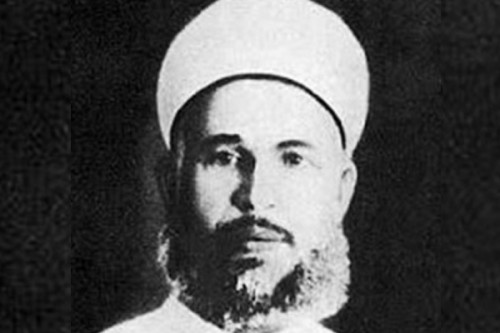The militant Arab preacher who lives on in Hamas' military wing and weapons

New Delhi, Oct 17 (IANS) This Arab militant leader's struggles during his life may not have achieved much, but the ongoing crisis in Israel brought his name back into the spotlight as Hamas' military wing, which carried out the attacks, is named after him, as are the short-range missiles it keeps on firing into Israeli territory.
Hamas' Izz ad-Din Al Qassam Brigades - and the Qassam missiles - are named after Syrian cleric and militant Izz ad-Din Al Qassam (1881/82-1935), and the name was appropriate. Al Qassam spent most of his fairly short life planning and fighting at least three colonial powers from Libya to Syria, before beginning his operations in Palestine, proving the seamless continuum of the Arab world and its politics.
Born in what was then Ottoman Syria, Al Qassam studied at the renowned Al Azhar University in Cairo in the first decade of the 20th century, and along with the religious training, acquired a political outlook. His aim was basically to revitalise his religion from its current stagnation, focus on development and uplift of the middle and lower classes, and reliance on armed struggle against European colonists, rather than the Arab elite's practice of cutting deals for mutual benefit.
Returning home to Syria to begin his religious work, he came out strongly against the Italian invasion of Libya in 1911 and sought to collect funds for the Libyan tribesmen resisting it - even crossing swords with a local Ottoman official who had his eye on the money. Al Qassam also gathered a band to go and fight in Libya and had reached Alexandria, but were not allowed to go further.
After the First World War, Al Qassam came out against the French control over Syria, and led a group of rebels fighting against French troops in northern Syria in 1919-20. However, the revolt was soon crushed, and he moved to Palestine, where he became a waqf official.
Infuriated at the plight of Palestinian Arab peasants and the growing influx of Jewish immigrants, Al Qassam, in the 1930s, formed bands of local fighters and launched attacks against British and Jewish targets.
He was eventually killed in a shootout by the British security forces in 1935, following his alleged role in the killing of a policeman.
Though Al Qassam's guerrilla operations had limited impact during his lifetime, his actions and his death were one factor in the outbreak of the 1936–1939 Arab revolt in Palestine - one of the biggest headaches for the British mandatory authorities and leading to the realisation that their rule - amid resurgent Jews and increasingly aggrieved Arabs - would not be very tenable.
He could have renamed a footnote in the fractious history of the Middle East, but his legacy would endure.
As displaced Palestinians sought to organise themselves in the 1950s following the debacle of the 1948 Arab-Israeli war, the fedayeen who emerged in the 1960s held Al Qassam to be their inspiration.
The founders of Fatah, which, under Yasser Arafat, became the main constituent of the PLO, had initially considered naming their group the "Qassamiyun", as Al Qassam's followers had styled themselves in the 1930s.
Palestinian militant and place hijacker Leila Khaled, who became the face of the resistance after her iconic photo cradling a gun circulated, had noted her Popular Front for the Liberation of Palestine was continuing in Al Qassam's footsteps as his generation started the revolution, and her generation intended to complete it.
However, it was left to Hamas to revive Al Qassam's name.

|

|

